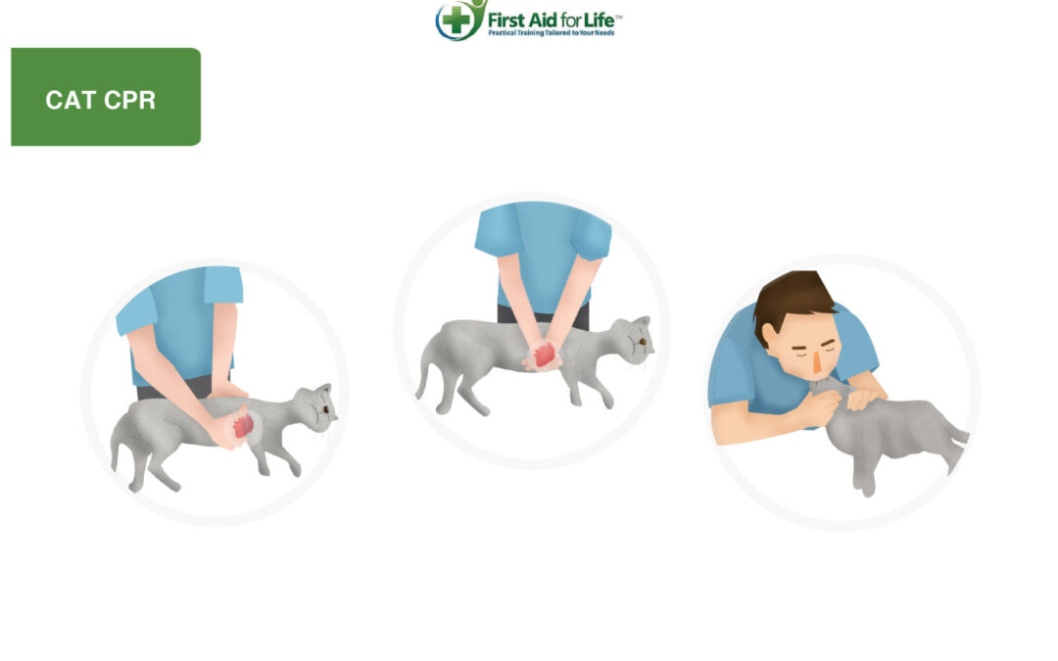How to Perform CPR on a Cat
What is CPR?
CPR, or cardiopulmonary resuscitation, is a life-saving technique used in emergencies when someone’s heartbeat or breathing has stopped. It involves a combination of chest compressions and rescue breathing to keep oxygenated blood flowing to the vital organs until further medical help can be provided.
What is known about CPR on cats?

Image Source: firstaidforpets.net
CPR on cats is similar to CPR on humans, but there are some key differences to keep in mind. Cats have smaller bodies and different anatomical structures, so it’s important to adjust your technique accordingly. Performing CPR on a cat can be a stressful and challenging experience, but it could potentially save their life in an emergency situation.
How to Perform CPR on a Cat
1. Check for responsiveness: Before starting CPR, gently shake the cat and call their name to see if they respond. If there is no response, check for breathing and a pulse. If the cat is not breathing or has no pulse, begin CPR immediately.
2. Position the cat: Lay the cat on a flat surface with their right side down. Make sure their head and neck are in a neutral position to ensure a clear airway.
3. Check for breathing: Look for chest movement, listen for breath sounds, and feel for airflow near the cat’s nose and mouth. If the cat is not breathing, proceed to the next step.
4. Perform chest compressions: Place one hand over the cat’s heart, which is located behind the left elbow. Use your other hand to support the cat’s back. Press down firmly and quickly on the chest, compressing it about one inch for every 2-3 seconds. Perform 30 compressions at a rate of 100-120 per minute.
5. Provide rescue breaths: After performing 30 chest compressions, tilt the cat’s head back slightly, close their mouth, and breathe into their nostrils. Watch for chest rise and fall as you provide two rescue breaths. Continue with the cycle of 30 compressions and two breaths until help arrives or the cat shows signs of recovery.
Solution
CPR can be a life-saving technique for cats in emergency situations, but it’s essential to remember that it’s not a substitute for professional veterinary care. If your cat requires CPR, it’s crucial to seek immediate medical attention as soon as possible. Remember to stay calm, act quickly, and follow the steps outlined above to give your cat the best chance of survival.
Information
CPR on a cat can be a stressful and challenging experience, but it could potentially save their life in an emergency situation. It’s essential to be prepared and know how to perform CPR correctly to help your furry friend in a time of need. Remember to stay calm, act quickly, and seek professional veterinary care as soon as possible.
Conclusion
Performing CPR on a cat can be a daunting task, but with the right knowledge and skills, you can potentially save their life in an emergency situation. Remember to stay calm, act quickly, and seek professional veterinary care as soon as possible. By following the steps outlined above, you can give your cat the best chance of survival in a crisis.
FAQs
1. Can anyone perform CPR on a cat?
2. How do I know if my cat needs CPR?
3. What should I do if my cat is not responding to CPR?
4. Are there any risks associated with performing CPR on a cat?
5. How long should I continue CPR on my cat before seeking professional help?
6. Can CPR be performed on kittens as well?
7. Is it possible to learn CPR techniques for cats online?
how to do cpr on a cat
